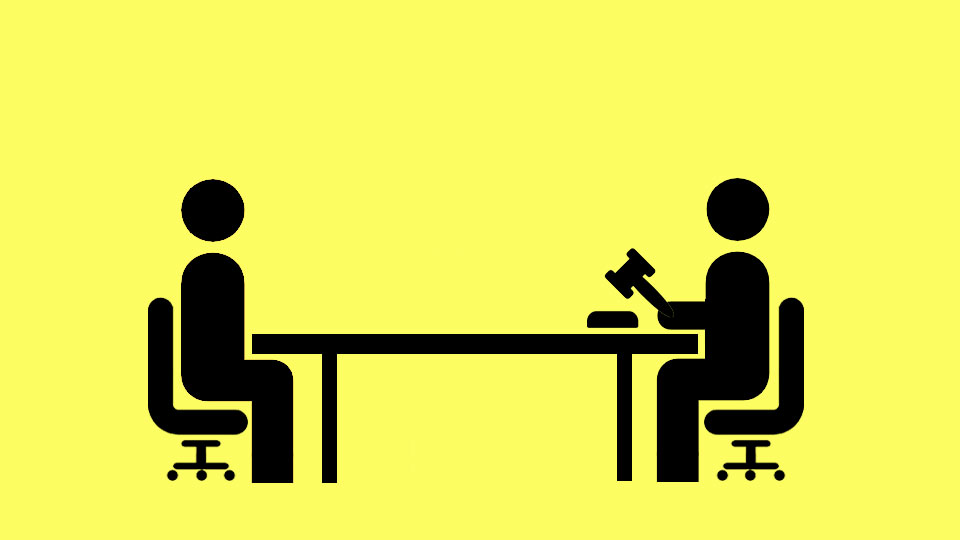Administrative Discipline
Disciplining and Demoting Employees
 Graphics courtesy of People ManagementOpens in new window
Graphics courtesy of People ManagementOpens in new window
|
Poorly performing employees may be given a warning or a reprimand and then disciplined by their leader. Alternatively, an employee may be demoted—that is have her or his current responsibilities, pay, and perquisites taken away, as when a mid-level leader is demoted to a frontline manager. (Sometimes this may occur when an organization is downsized, resulting in fewer higher-level leadership positions.)
Leaders must exercise discretion when recommending or imposing penalties on employees. In dealing with mistakes, leaders must consider what the mistakes were and under what circumstances they were made.
Mistakes resulting from continued carelessness call for disciplinary action. Honest mistakes should be corrected by counseling and positive discipline, not by punishment. These corrections should help the employee learn from the mistakes and become more proficient and valuable to the organization.
The specific ways in which a leader discipline employees may be dictated by organization policies or the union contract, if any. A leader must, therefore, be familiar with all applicable policies and rules, which include respecting the rights of employees in the discipline process. Employees’ rights include the following:
- the right to know job expectations and the consequences of not fulfilling those expectations,
- the right to receive consistent and predictable responses to violations of the rules,
- the right to receive fair discipline based on facts,
- the right to question management’s statement of the facts and to present a defense,
- the right to receive progressive discipline, and
- the right to appeal a disciplinary action.
The Discipline Process
Before administering discipline in response to problem behavior, leaders need to have a clear picture of the situation.
Usually leaders become aware of a problem either through their own observations or from another employee. In either case, leaders need to collect the facts before taking further action. Often this will result in a resolution to the problem.
When a leader observes and understands the facts behind problem behavior, the discipline process takes place in four steps:
- verbal or written warning,
- suspension,
- demotion, and
- dismissal.
These steps can be used one after the other in a “progressive” pattern of discipline, indicating that the steps progress from the least to the most severe action a leader can take.
In following steps in the discipline process, a leader should keep in mind that the objective is to end the problem behavior. The leader should take only as many steps as are necessary to bring about a change in that behavior: The ultimate goal is to solve the problem without dismissing the employee.
Three Pillars of Fair Discipline
The effective leader builds a fair discipline process on three pillars: rules and regulations, a system of progressive penalties, and an appeals process.
- Rules and Regulations
An acceptable disciplinary process begins with a set of clear disciplinary rules and regulations.
The rules should cover issues such as theft, destruction of organization property, drinking on the job, and insubordination. Examples of rules include the following:
|
The purpose of the rules is to inform employees ahead of time what is and is not acceptable behavior. Leaders should tell employees, preferably in writing, what is not permitted. The employee orientation handbook should contain the rules and regulations.
- Penalties
A system of progressive penalties is the second pillar of effective discipline. The severity of the penalty should depend on the offense and the number of times it has occurred. For example, most organizations issue warnings for the unexpected lateness. However, for a fourth offense, discharge is usual.
- Appeals Process
Third, an appeals process should be part of the disciplinary process. The aim is to ensure that leaders mete out discipline fairly. An appeals process is essential but is not panacea.
The employer can sometimes mitigate the effects of unfair discipline by catching it during an appeal. However, some leader behavior may be impossible to overcome. For example, actions that attack the employee’s personal identify are difficult to remedy.
Guidelines for Effective Discipline
The guidelines for effective discipline are:
- act immediately,
- focus on solving the problem,
- keep emotions in check,
- administer discipline in private, and
- be consistent.
See also:
- Human Resource ManagementOpens in new window
- Legal Environment of Human Resource ManagementOpens in new window
- Recruitment and SelectionOpens in new window
- Employee Learning and Development Opens in new window
- Employee Compensation and BenefitsOpens in new window
- Employee MotivationOpens in new window
- Employee DismissalOpens in new window
- Kinicki, A.J., Jacobson, K.J.L., Peterson, S., & Prussia, G.E. (2013). Development and validation of the performance management behavior questionnaire. Personnel Psychology, 66 (1), 1-45.
- DeNisi, A. S., & Murphy, K. R. (2017). Performance appraisal and performance management: 100 years of progress? Journal of Applied Psychology, 10 (3), 421 – 433.
- Kim, K. Y., Atwater, L., Patel, P. C. & Smither, J. W. (2016). Multisource feedback, human capital, and the financial performance of organizations. Journal of Applied Psychology, 101 (11), 1560 – 1584.
- Heathfield, S. M. (2018, January 4). 60 degree feedback: See the good, the bad and the ugly. The Balance.
- Przystanski, A. (2016). Performance ranking re-enters legal spotlight.
- Meinert, D. (2015). Reinventing reviews. HR Magazine, 60 (3), 36 – 40.
- Feintzeig, R. (2015, April 22). The trouble with grading employees. The Wall Street Journal, pp. B1, B7.
- Mayhew, R. (n.d.). Legal aspects of performance appraisals. Chron.

